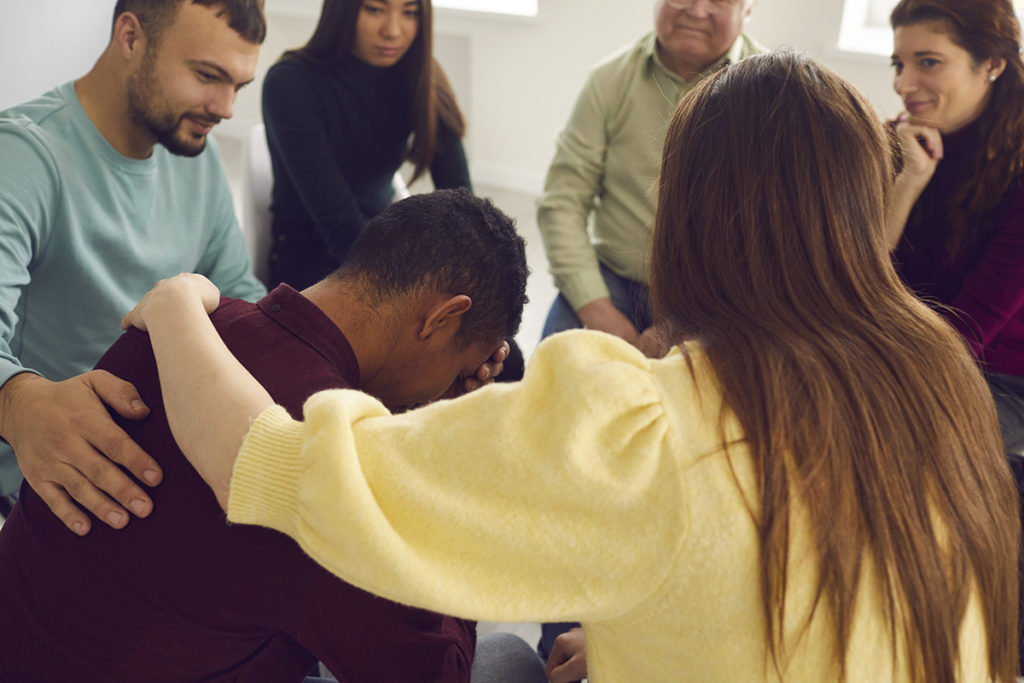Read the latest and greatest from our team
of incredible specialists.

Beach House Recovery Center » Blog » How Substance Use Disorders Affect the Black Community
As much as we might wish to imagine that we live in a nation that’s free from racial preference, discrimination and prejudice, ongoing national conversations about race relations and systemic inequities have demonstrated that idealistic society is far from reality.
In observation of Black History Month all February, what factors impact drug policing, substance misuse and treatment access in the Black community?

No conversation about substance use in the Black community can afford to ignore the impact of the war on drugs – sweeping social policies that further disenfranchised minority populations starting in the 1960s.
One repercussion of these initiatives is that Black people are much more likely to get arrested and incarcerated for drug-related crimes. However, this doesn’t correlate with an increased prevalence of substance abuse among Black people, but instead with law enforcement’s lopsided focus on urban areas and communities of color.
Despite relatively uniform rates of substance abuse among racial and ethnic populations in the U.S., the Black community and other citizens of color experience a disproportionate rate of drug arrests and convictions. For example, nearly 80% of the federal prison population and almost 60% of people in state prison are Black or Latino, and the vast majority of these prisoners are facing harsh sentences for possessing or selling drugs. Having a criminal record, often from a young age, leads to a vicious cycle in terms of a lack of education, underemployment and a lower quality of life.
Analysts have singled out stigma and systemic racism as two cultural aspects that continue to play an outsized role in police-community interactions. Black people are far more likely than their white neighbors to experience openly hostile or even violent encounters with law enforcement officers. The Black Lives Matter movement has worked to highlight these ingrained inequalities in the criminal justice system, among other instances of discrimination impacting the Black community.
According to the U.S. Centers for Disease Control and Prevention, the largest percentage increase in drug overdose deaths in recent years has been among Black Americans. CDC data says that from 2016 to 2017, overdose deaths in the Black community rose by 25%, compared to an 11% increase among whites. What accounts for this disparity?
Sadly, Black Americans who struggle with substance use disorders often encounter more treatment barriers in the form of stigma, bias and socioeconomic status. The smartest way to remove some of these obstacles is to lower the threshold to connect with much-needed services. In some communities, that might include providing more educational resources about the disease of addiction to help fight the stigma. In other, lower-income neighborhoods, people might worry that they will face legal trouble or lose access to public housing or SNAP benefits if they enroll in inpatient or outpatient substance abuse treatment.
Instead of limiting access to drug abuse recovery and other necessary social services, communities with the most vulnerable, at-risk populations should expand access. That means anytime a person reaches out seeking help, they can connect with the correct agency or organization to meet their needs – without fear of any repercussions.
At Beach House, our chief priority is to be the best substance abuse treatment facility in the nation. We recognize that the disease of addiction affects millions of Americans, regardless of race, ethnic background, sexual orientation and socioeconomic status. However, as is the case with other issues throughout America, the Black community experiences disproportionate access to quality care.
We aim to remove treatment barriers by accepting a wide range of health insurance plans. We’ve also worked hard to cultivate a culture of love, compassion and acceptance for all our clients, with an industry-leading 7-to-1 therapist-to-client ratio that will help you feel welcomed and valued while addressing your unique needs. Contact our admissions advisors to learn more.
Whether you’re researching for yourself or a loved one, Beach House can help. We understand that this is a serious time in your life and that the treatment center you choose matters. We want you to feel comfortable and empowered to make the right decision for yourself, a friend, or a family member. This is why a counselor is waiting and available to answer your questions and help put your mind at ease regarding the next steps. Many of the staff at Beach House have walked in your shoes. If you feel you’re ready or want more information about how to help a loved one, we can help today. You can also learn why we are voted the #1 rehab for addiction treatment in Florida.
We accept most major insurance plans and can verify your benefits quickly and confidentially.
We’re committed to helping you access the care you need, our admissions counselors can guide you through your coverage options and available resources.





"*" indicates required fields